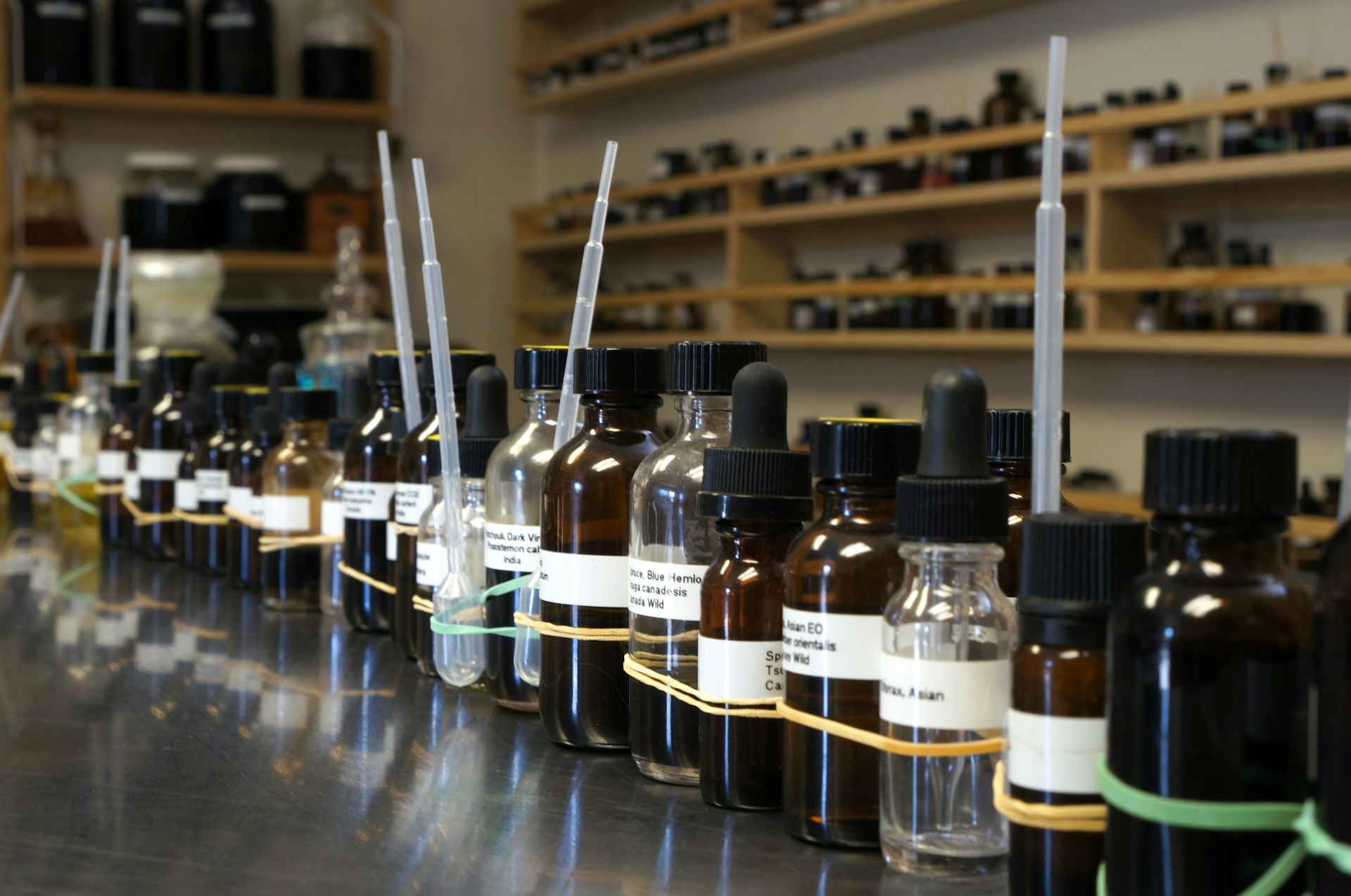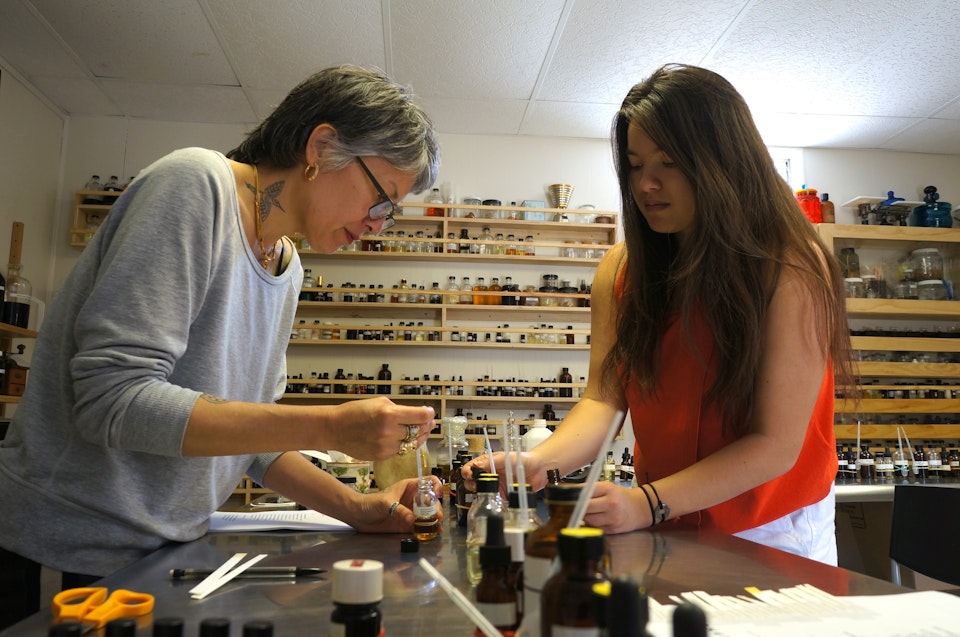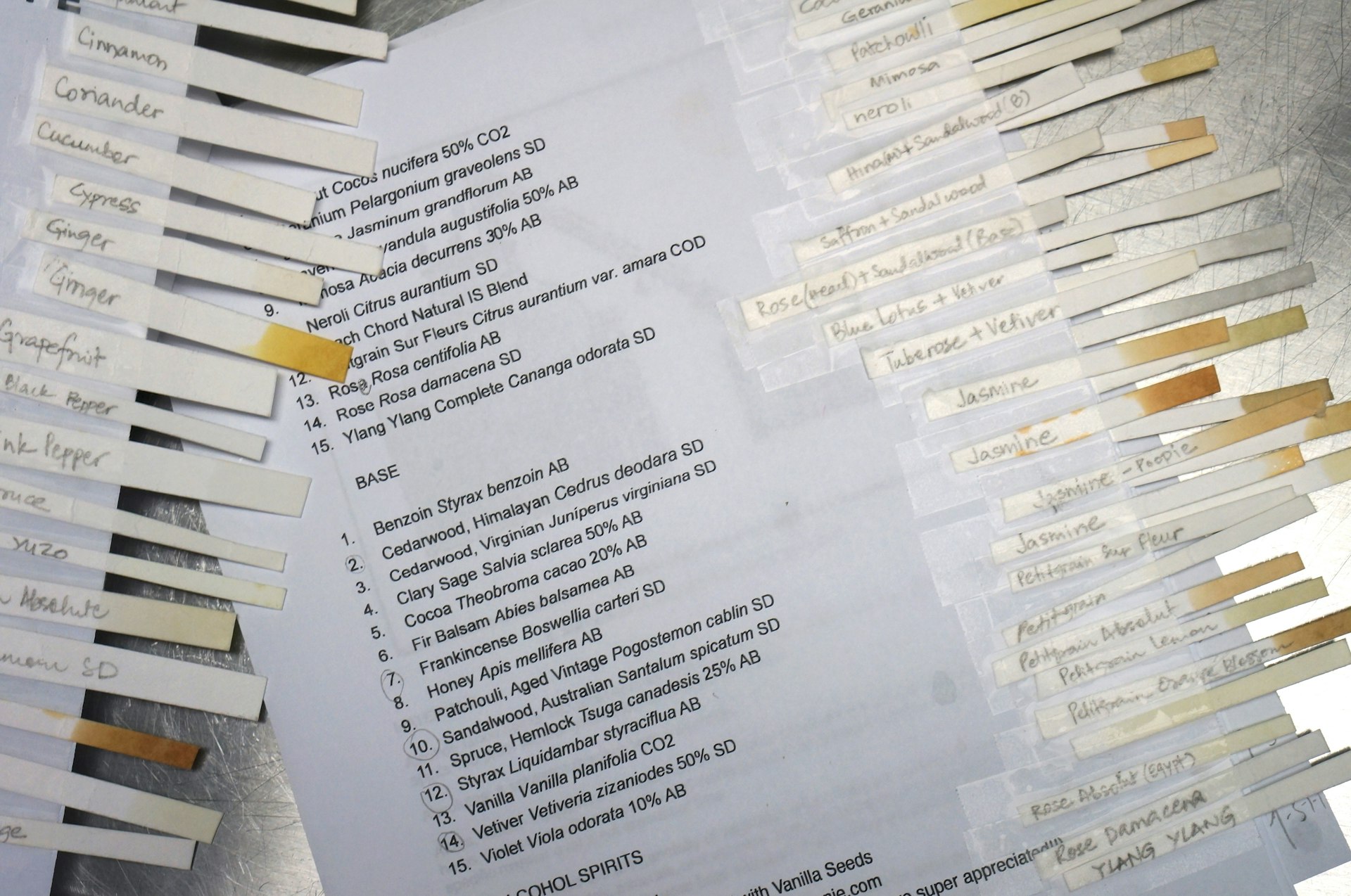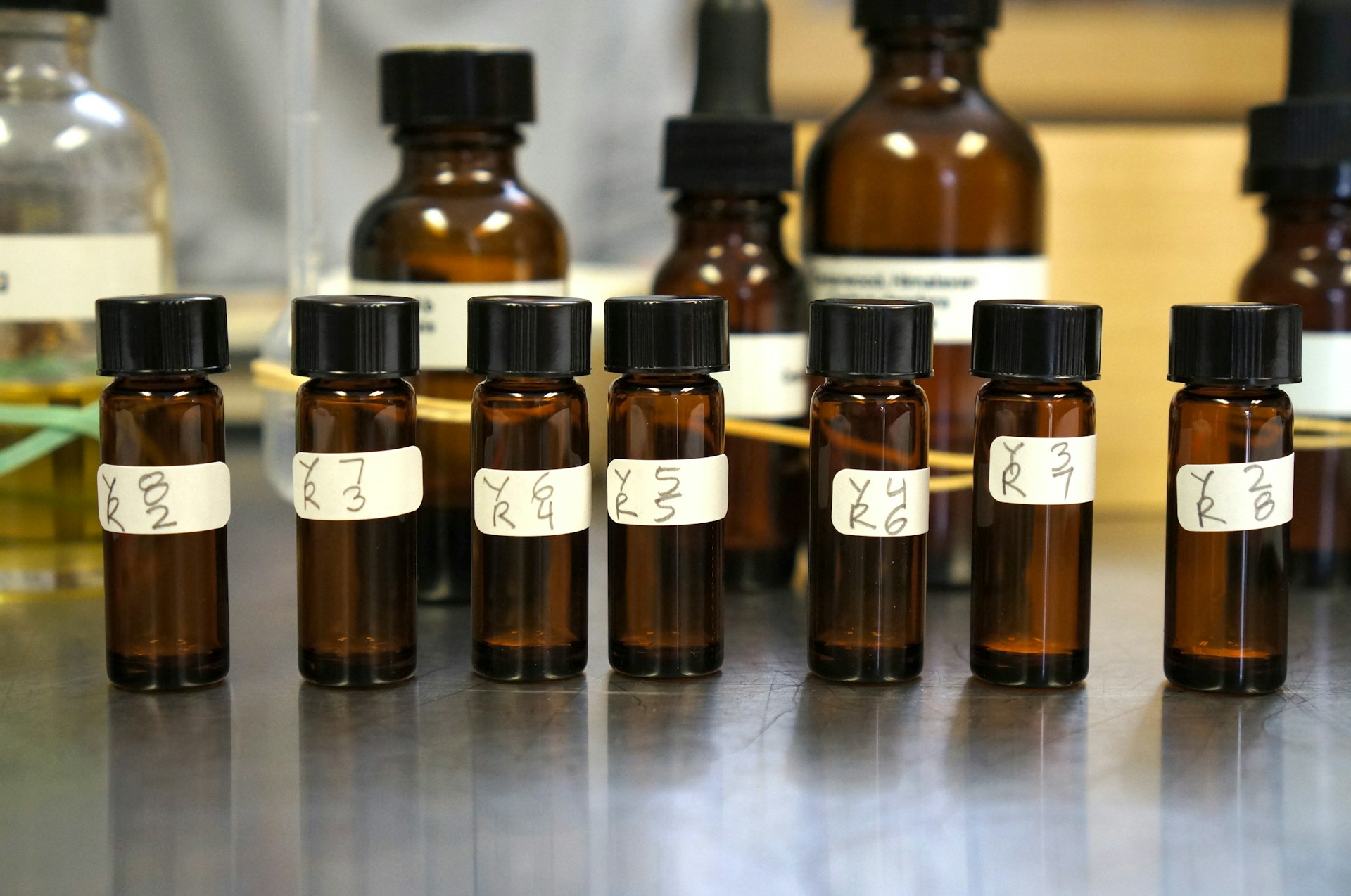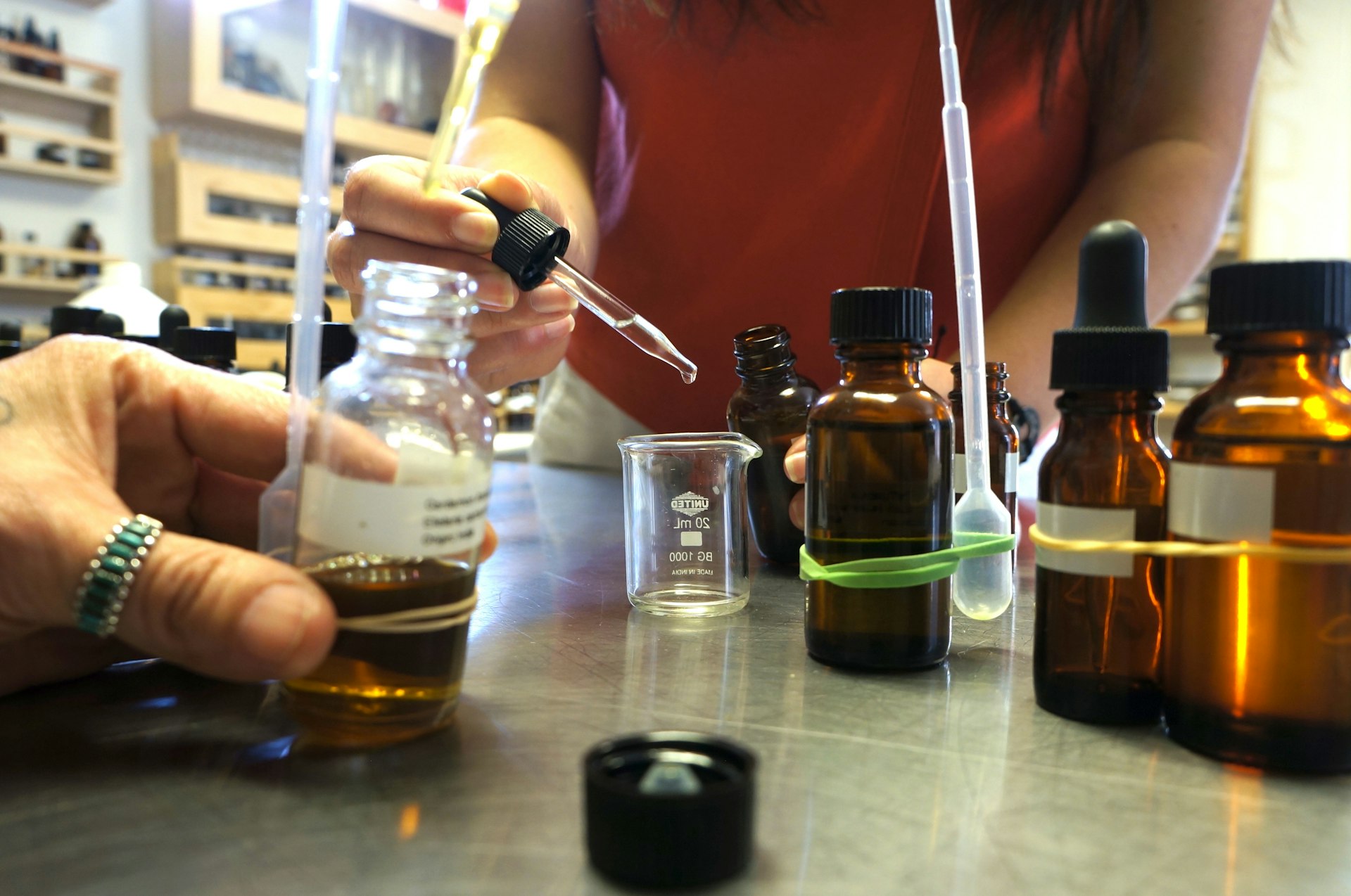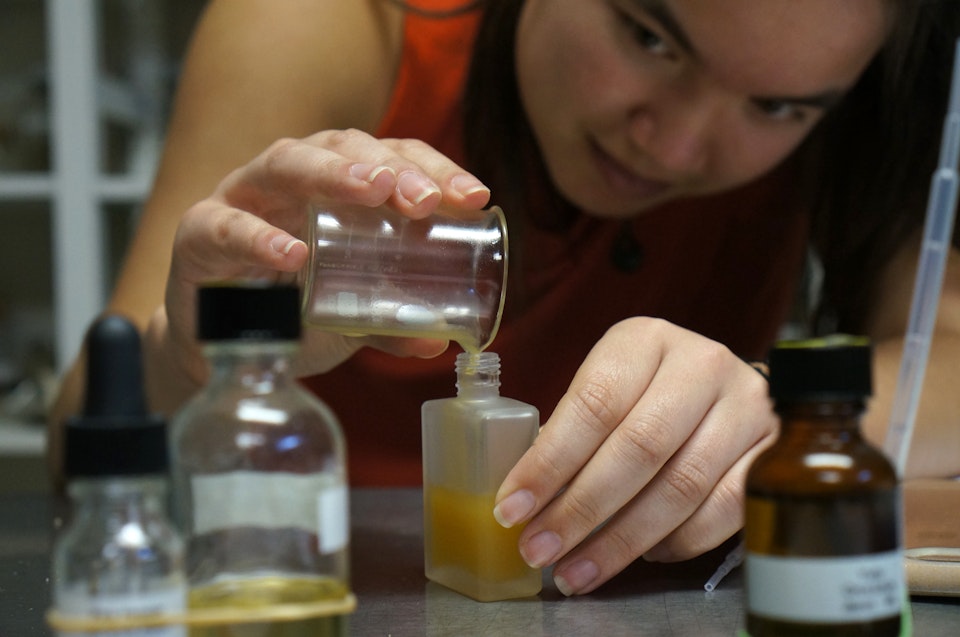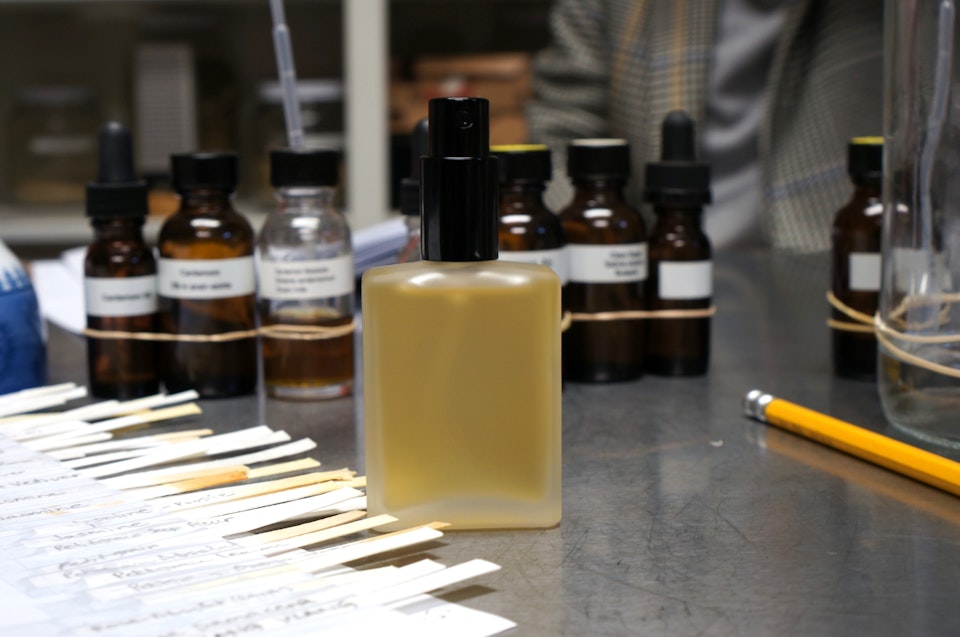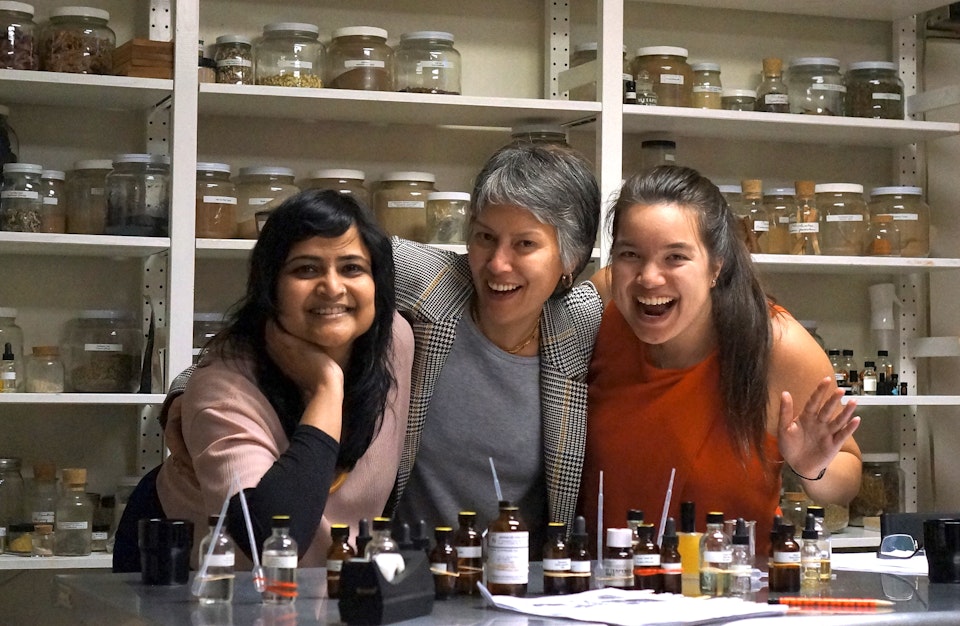May 10, 2019
Team VAWAA Learns Natural Perfume Making with Persephenie
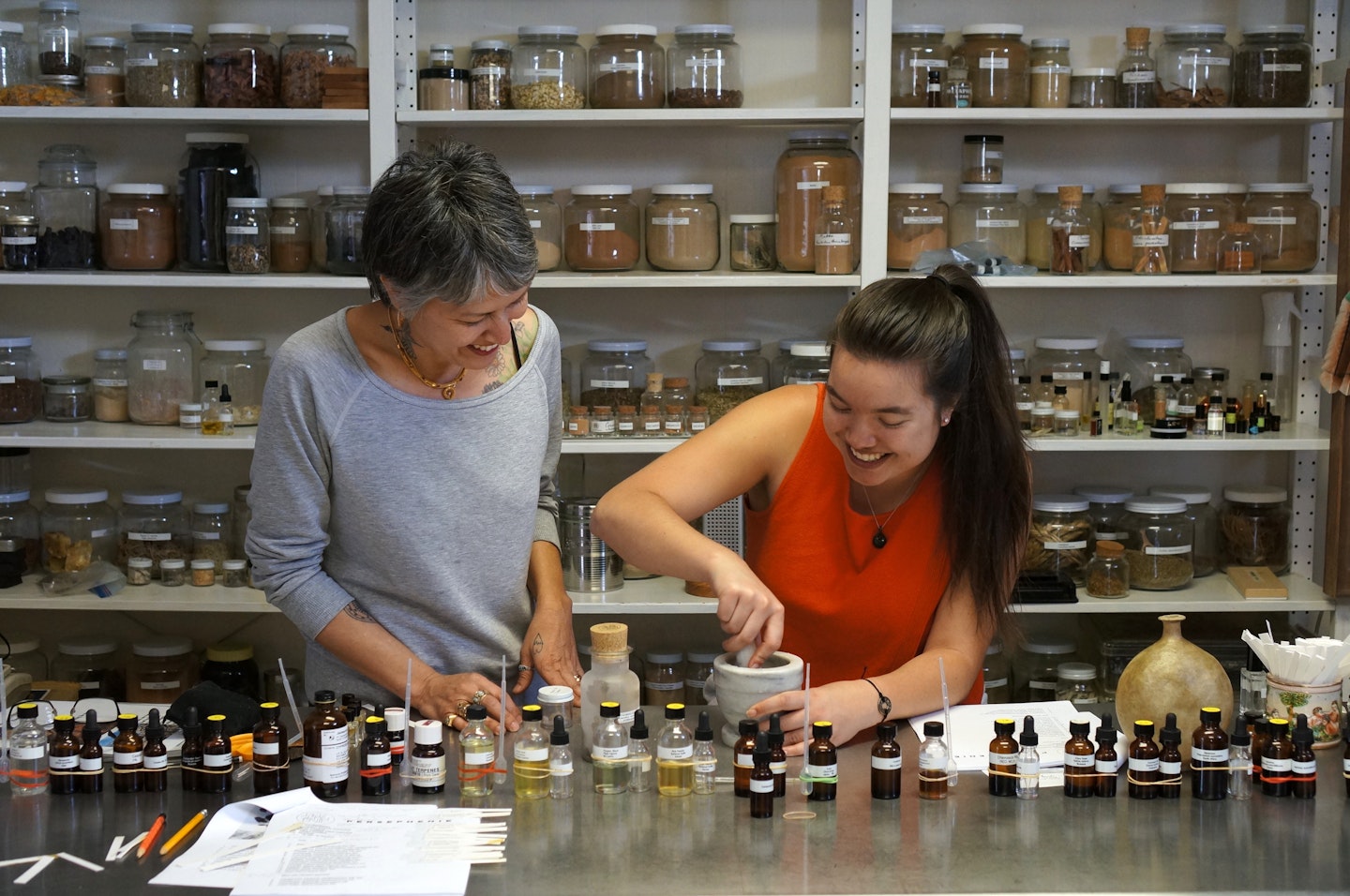
If our founder Geetika could, she would do a VAWAA every month. That's why she started this company in the first place– she loves studying crafts from masters. And I love every opportunity to slow down, dive into my self-expression, and re-center. So, after a few intense months growing the company (and launching 15+ new VAWAAs!), it was time to refuel and take a mini break to create.
We decided to work with our sense of smell this time. It's one of our most underdeveloped senses, and we felt the need to give ourselves a break from the constant visual stimulation.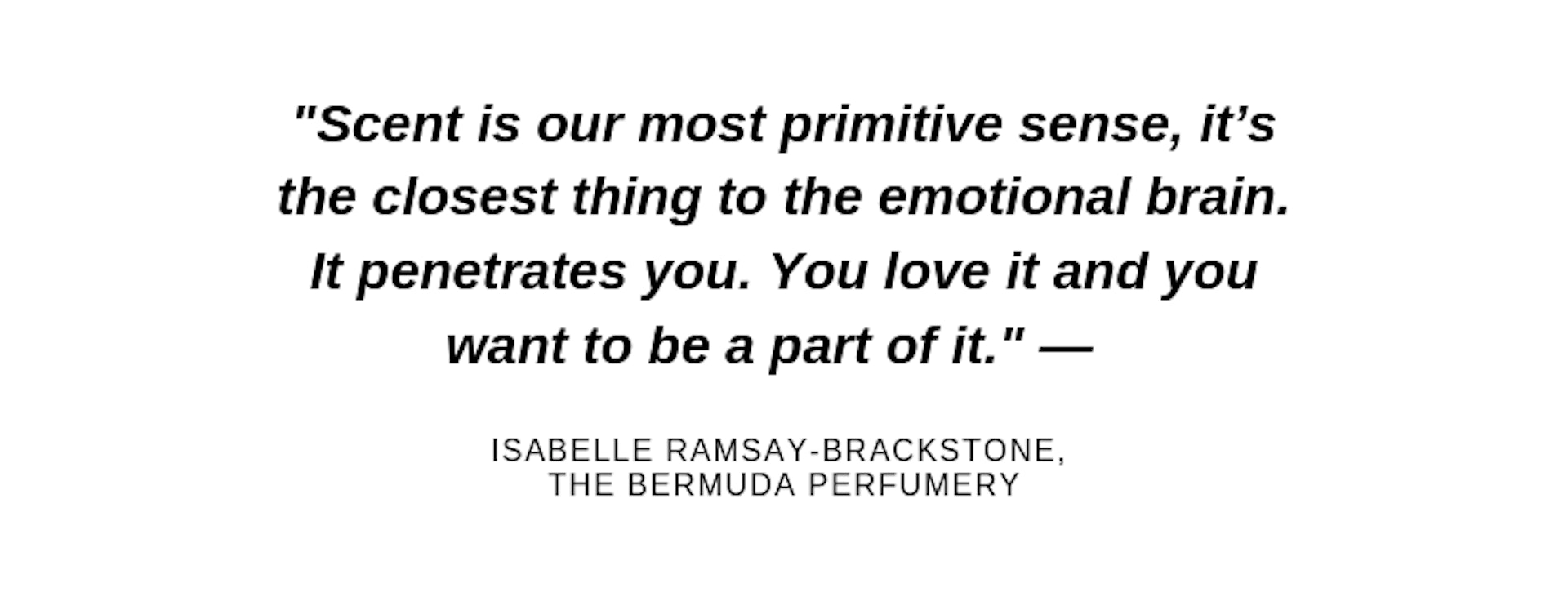
Learning Natural Perfume-Making
It's not every day that you come across a perfumer and incense maker who has spent years perfecting the art of aromas. Persephenie is a Los Angeles based artist (and a VAWAA artist) who specializes in natural materials.
Her love of scent began the first time she traveled to India, where she became fascinated by the olfactory and antiquated techniques of incense and perfumery. After coming back to LA and studying the subject for years, she opened her first aromatic studio 15 years ago. She enjoys researching recipes from cultures around the world, interpreting them, sometimes modernizing them, and of course, using stellar natural raw materials.
Neither Geetika nor I had worked with perfumery before, and if we’re being real honest, most commercial perfumes just tend to make us sneeze... so frankly, we couldn’t wait to make our own!
It was bright and early when Persephenie welcomed us into her studio in West LA. Entering her space for the first time, I notice beautifully packaged natural oils sitting on shelves and massive jars of incense spaced out underneath. We drop our bags and are led behind a curtain, stepping into Persephenie’s lab – Woah.
Rows and rows of glass jars, bowls, bottles, beakers, natural oils, powders, pipettes... you name it. Despite the space being quite small, it seems to be just the perfect size; every object has its place and is meticulously labeled and organized.
She makes us coffee (mixed with oat milk – heaven!) and it already feels like we are meeting a friend. She asks what we’re hoping to learn. Simply put, we’re eager to discover her world of perfume-making and use our sense of smell.
Persephenie hands us each a workbook filled with a wealth of information: from definitions and vocabulary, to methods and classifications, and finally, a worksheet for our own perfume recipe. What a rush of excitement to be a student again – to be free of expectations and just play and be open to a whole new world.
After going over tools and materials, distillation processes and extraction methods, we learn that perfumes are made up of scents from three different “notes”: Top Notes, Mid or Heart Notes, and Base Notes. Notes are based on volatility: top notes have the brightest yet shortest-lasting scent as they evaporate faster; and base notes have the slowest volatility, lasting the longest on the skin.
For any craft, you first need to know your tool kit. So before we start making our own perfume, we take some time to discuss and “meet” essential oils and raw materials.
On the table in front of us, Persephenie has laid out over 50 essential oils and ordered them by note, and then the smelling begins! For each oil, Persephenie hands us a test strip; once we smell each one, we write down its name and tape it to our worksheet so we can revisit it anytime.
After “meeting” each top note and most mid notes, it’s time to give our nose a break. Geetika and I walk down the street for a quick lunch at the historic Farmers Market at the Grove. I get a crêpe while she goes for the empanadas; while we eat, we discuss how unusual yet exciting it is to have to pay attention to so many specific aromas. Before we know it, we’re back in the lab, to finish meeting the rest of the notes.
Next up, we begin to combine notes, first by learning about 19th century French perfumer Septimus Piesse’s odor classification system corresponding to the musical scale.
We make our own chords by choosing two notes that we blend together multiple times, each with a different amount of drops to see which combination works best. This is the foundational step of perfume making. Once you know your chords, you can make an entire song. I choose to blend black pepper with honey and begin truly appreciating the art of perfume making – just a single drop can make all the difference!
Once we get the hang of this step of the process, we continue learning about natural perfumery as we snack on delicious Venetian chocolates that Persephenie’s friend had just brought back from Italy.
The challenge with natural perfumes is how long they last on the skin. We’re introduced to fixatives, animal scents and tinctures, that help add dimension and longevity on the skin. Sourcing these ingredients responsibly can be challenging and expensive, hence the high cost of natural perfumes. Did you know it takes 2000 rose petals to extract 1 drop of rose oil? On the subject of animal scents, did you know sperm whale poop and vomit can be used in perfumery?? We had some good laughs smelling these...
At last, we take out our worksheet and begin to make our own natural perfume. The directions are rather straightforward, and though Persephenie gives us the space and freedom to experiment and blend on our own, she stays present to guide us along the way, teaching us techniques and subtle tips. Impressive how she can visualize multiple notes together and so easily tap into her olfactory memory!
When creating a perfume, each drop can completely change the overall balance and flow of smell and it's hard to go back. So each note has to be added incrementally drop by drop. You want to create a smooth progression between the top, middle and base notes. It requires a lot of experience to know each note and how it works with other notes.
Too curious not to, Geetika and I give each other whiffs of our blends from time to time to see how ours are progressing. Hers turns out “musty” and “woody”, while mine is more “sweet.”
We end up adding about 108 drops of essential oils in each our perfumes. I choose cassia, ginger, jasmine, neroli, clary sage, and honey among other oils. Geetika makes hers with 10 notes, including bergamot, geranium, petit grain, sandalwood, and blue hemlock spruce.
Once we are satisfied with our first ever concoction of oils, we carefully pour it into our perfume bottle. We add alcohol to fill the rest… and voilà! Our very own natural, organic, alcohol-based perfume. Neither of us sneezed even once!
Final takeaways
There is no “perfect” blend. What I may love today and wear every single day for a month, may be a blend I’ll leave on the shelf and forget about for the next year. As Persephenie puts it: “Scent is like music, it’s so subjective.”
Geetika has been traveling with her perfume every day. She says "it transports me to that moment. I am still getting to know the individual notes. They each have a personality that changes depending on the day or my mood."
Thank you, Persephenie, for introducing us to the world of natural perfume-making! We so enjoyed learning more about the nuances of smell, the process of composing a scent, and having the opportunity to make a perfume of our very own.
Written by Jenny Quénard, edited and pics by Geetika Agrawal
Vacation With Persephenie in Los Angeles, United States
For more stories and new artist updates, subscribe here.
